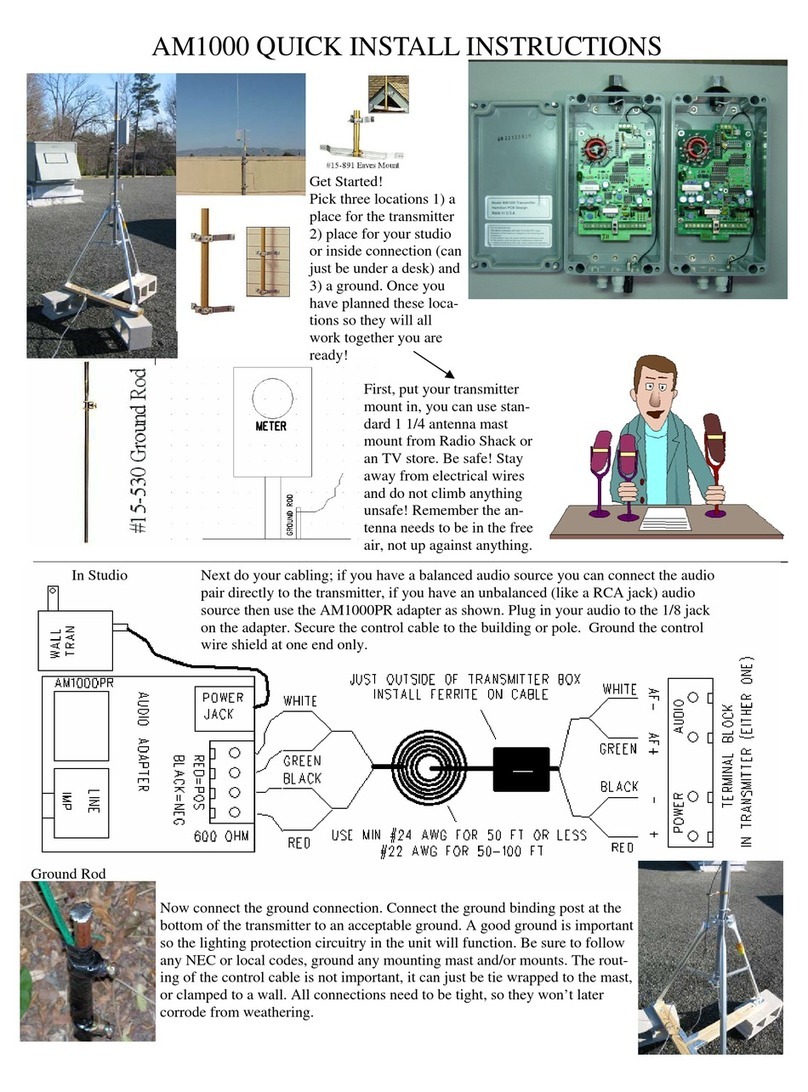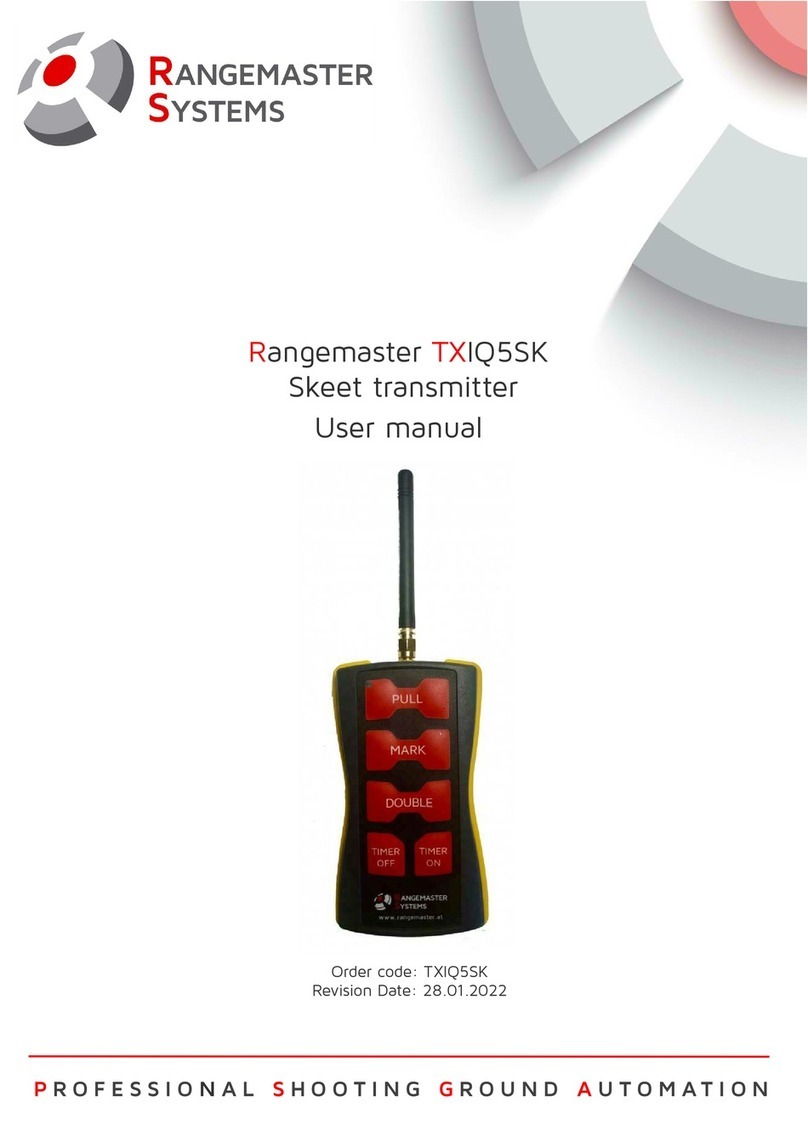
Antenna
Placement of the antenna is important for
good range. Radio waves will go through
wood, rockwall, ect, but will be slowed by
brick, masonry, shingles, walls with metal
studs. Try to have nothing be space (air) be-
tween the antenna and the radios you want to
receive the signal if possible. If you are trying
to get your signal outside it may be possible to
feed the antenna outside for better outside
radiation. It is important to try different loca-
tions.
”Section 15.219 Operation in the band 510 - 1705 kHz.
(a) The total input power to the final radio frequency
stage (exclusive of filament or heaterpower) shall not
exceed 100 milliwatts.
(b) The total length of the transmission line, antenna
and ground lead (if used) shall not exceed 3meters.
(c) All emissions below 510 kHz or above 1705 kHz
shall be attenuated at least 20 dB below the level of the
unmodulated carrier. Determination of compliance with
the 20 dB attenuation specification may be based on
measurements at the intentional radiator's antenna out-
put terminal unless the intentional radiator uses a per-
manently attached antenna, in which case compliance
shall be demonstrated by measuring the radiated emis-
sions.”
If you have trouble feel free to call, but check a few common problem first:
-Is your audio level high enough? Is it on? Audio is a gate on the power, if there isn’t enough audio the range will suffer
-Check the voltage at the terminal block with a voltmeter, is there at least 12 volts there?
-Low range is often a bad ground, it could be poor soil conductivity in you area, a broken ground wire, This is common
when using an electrical ground. It is possible to improve the electrical ground, consult an electrician if you don’t feel quali-
fied. Another ground rod can be added at the main building ground location.
-Be sure you set the power properly
-Be sure the “Audio Gain” is turned up
-Be sure the crystal is in
-Here is a way to check transmitter operation: temporarily turn power up, you can draw a small spark from one of the round
red coil leads or the antenna with a lead pencil if the unit is working correctly. If it is to bright in the room you may not see
the spark
RangeMaster Transmitters, Inc.
(919)367-0607 (919) 363-9393
Digital Volt Meter
RANGEMASTER FCC CERTIFIED AM TRANSMITTER
Getting good Range
You can use audio equalization/ compression limiting equip-
ment to improve your audio signal. It is also possible to use
audio processors designed only for AM transmitters, to boost
your range (see website). Get your audio level as loud as you
can, your station should sound as loud as others.
Mostly range is about the antenna placement.
Be sure the wires to the transmitter are not moving around
and are clamped down before you tune, if wires or the trans-
mitter are moved the transmitter needs to be retuned.
It is possible to use multiple transmitters for more range, also
the unit has a digital link, see the website
http://www.am1000rangemaster.com





















